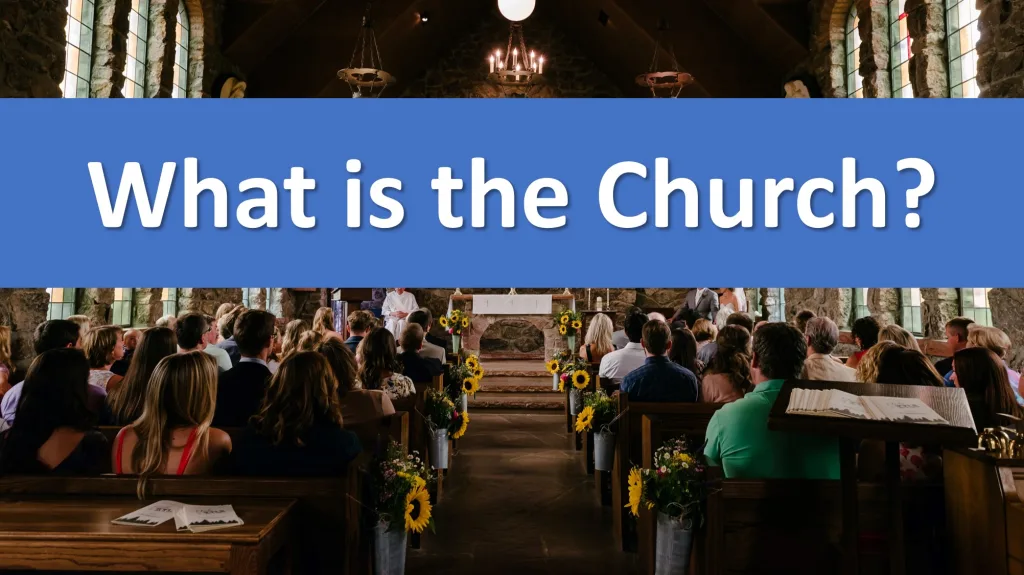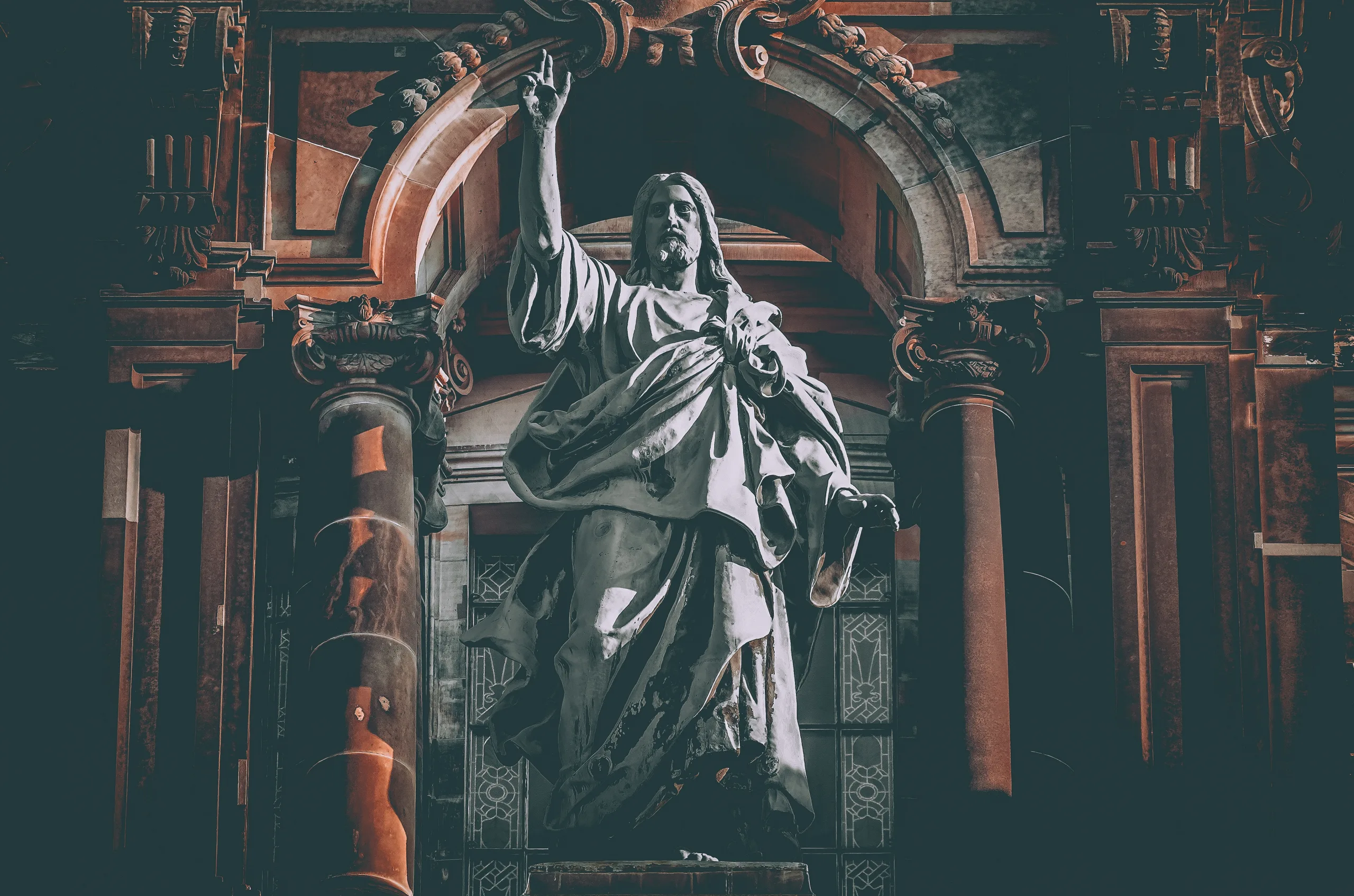What Is the Church?
Christianity in the United States often has been individualistic—“just between that person and God.” While an individual relationship with God through Jesus Christ is essential, the New Testament also strongly emphasizes the corporate nature of Christianity; God is building a group of people who will glorify him and live with him forever. This group is called the church.
The English word church comes from the Greek term that means “of the Lord.” The New Testament Greek word often translated church is ekklēsia, which means “assembly” or “gathering” (literally, “called out”). This is used in two different ways, as determined by context.
“Church”: Two Meanings
First, ekklēsia can refer to those who profess to believe in and follow Jesus and who meet together in a specific geographical location. Paul addressed certain letters, for example, “To the church of God in Corinth” (1 Corinthians 1:2; 2 Corinthians 1:1). Near the end of his letter to the Romans, Paul said, “Greet also the church that meets at [Priscilla and Aquila’s] house” (16:5; see also 1 Corinthians 16:19; Colossians 4:15). From these texts come the theological terms local church or visible church—the latter meaning that if you went to that particular location, you could see those Christians.
Second, ekklēsia can refer to all true Christians in all times and places. For example, “Do not cause anyone to stumble, whether Jews, Greeks or the church of God” (1 Corinthians 10:32); “God placed all things under [Christ’s] feet and appointed him to be head over everything for the church” (Ephesians 1:22).
These references, more cosmic in nature, go beyond a relatively few professing Christians in a certain place. From these texts come the theological terms universal church or invisible church—the latter meaning that these people are scattered through the centuries, around the world, and even in heaven, and therefore cannot be seen together (yet!).
We must note here that according to the New Testament, the church is not a place (such as a building), but a people.
The birthday of the church (in both of these senses) seems to be the day of Pentecost, as recorded in Acts 2. The argument goes like this: In Matthew 16:18, Jesus predicted and promised something to come: “I will build my church.” From Ephesians 1:22–23, we know the (universal) church is the “body.” From 1 Corinthians 12:13, we know all Christians are “baptized by one Spirit so as to form one body [the church].”
And from Acts 11:15–16, we know Peter identified Jesus’ near-future promise of the Spirit’s baptism (Acts 1:5) with what occurred on the day of Pentecost. The group of people gathered in the upper room on that day became something new. The church did not exist in the Old Testament. It could come into existence only after the successful completion of Christ’s messianic mission.
Illustrations and Analogies
A number of New Testament metaphors help us to understand the church’s nature and importance. Most dominant is that the church is a body and Christ is its head (Romans 12:3–8; 1 Corinthians 12; Ephesians 1:22–23; 4:4–16; Colossians 1:18; 2:19). This beautifully emphasizes three truths.
First, there is unity among these people. Just as the physical body is one unit, so the church is one body (1 Corinthians 12:12). This oneness is based on being united to the head, Jesus Christ, and is accomplished by the work of the Holy Spirit (Ephesians 4:3).
Second, there is diversity within the one body. Just as the physical body’s many parts do different things, so the church has many parts, namely, individual believers with different roles and responsibilities (Romans 12:4; 1 Corinthians 12:12, 14).
Third, there is interdependence among the many members of the one body. Just as the physical body depends upon the working of all its parts, and each part depends upon the working of other parts, so the church needs all Christians to contribute what God has called and gifted them to contribute.
This is the only way the church can be built up (edified), healthy, and mature (Romans 12:5; 1 Corinthians 12:12–26; Ephesians 4:11–16; Colossians 2:19).
Jesus described the church as his flock and himself as the Good Shepherd (John 10:11–30). He cares for, protects, feeds, and nurtures his followers. He has also appointed under-shepherds to help him care for his sheep (Acts 20:28; 1 Peter 5:3). We will discuss these leaders in chapter 34.
Peter says the church is a “holy priesthood” (1 Peter 2:5–9). In contrast to the Old Testament system in which only certain people—priests in Aaron’s line—could function as priests and come into God’s presence, now all believers have the privilege of functioning as priests and coming directly into the presence of God through our high priest, Jesus (Hebrews 4:14–16).
Paul used three “church metaphors” in his letter to the church in Ephesus.

First, he refers to all Christians as “members of [God’s] household” or family (Ephesians 2:19). He continues this image in 1 Timothy 3:15, commanding Timothy, in his pastoral role, to deal with Christians as he would his own father, mother, and siblings (1 Timothy 5:1–16; see also Titus 2:1–15). We then ought to regard fellow believers as brothers and sisters in Christ (Matthew 12:46–50) and treat them as family members.
Second, Paul refers to the church as a building (Ephesians 2:20–22; see also 1 Peter 2:5). Jesus Christ is the cornerstone, the apostles and prophets make up the rest of the foundation, and all Christians make up the building blocks of the rest of the structure. Specifically, this building is a temple in which God himself lives through the Spirit.
Third, Paul calls the church the bride and Christ the husband (Ephesians 5:23–33). The focus is on Christ’s love for his bride (v. 25), his commitment to present a holy bride to himself (vv. 26–27), and the bride’s responsibility to submit to his leadership (v. 24). As Paul points out, marriage between a man and a woman is patterned after and should reflect this mysterious reality.
The church is a precious gift of God to Christians and is absolutely essential to our spiritual health—both individually and corporately.
INTERESTING FACT
The pattern of ancient Near-Eastern weddings provides an analogy for the church as Christ’s bride.
First came a period of engagement, which, unlike today, was a legally binding agreement (a divorce was necessary to break it). This describes our relationship to Jesus right now and indicates the relationship’s security. During this period, the husband-to-be prepared the house to which he would take his bride after the wedding.
Jesus said he was going away to prepare a place for us; he will eventually come back to take us there to be with him forever (John 14:1–3). On the day of the wedding, the groom came with fanfare and celebration to the house of his bride-to-be.
Finally, the marriage ceremony took place, followed by the marriage banquet. The church’s marriage to Jesus and the marriage banquet are described in Revelation 19:7–9. Believers now are in the engagement period; we await the coming of our bridegroom, Jesus, to whom we will be eternally wedded.

Aaron, D. (2012) Understanding Theology in 15 Minutes a Day. Minneapolis, MN: Bethany House Publishers, pp. 172–177.



